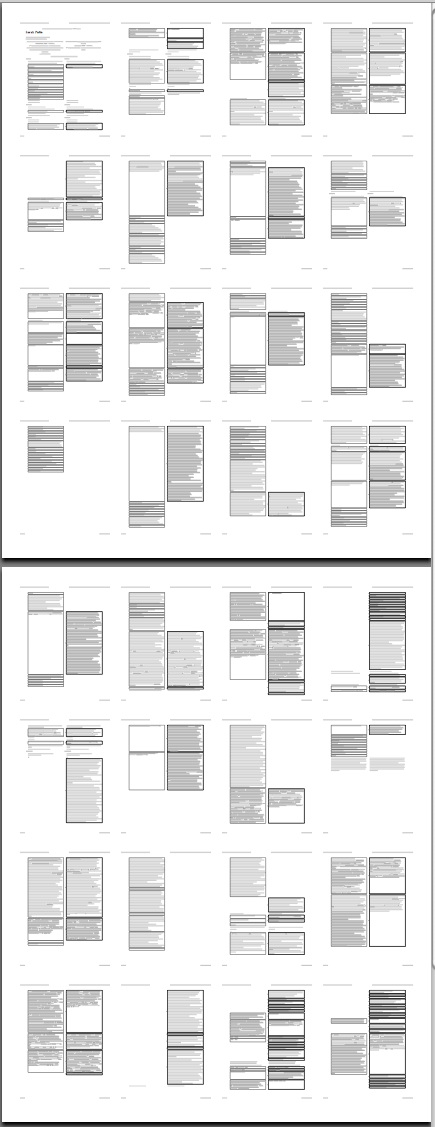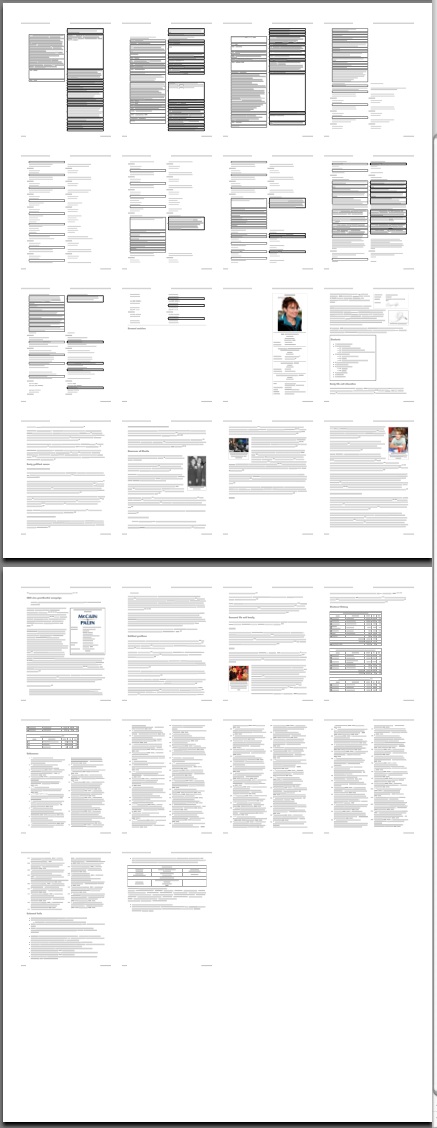Views of Wikipedia are decidedly mixed in academia, though perhaps trending slowly from mostly negative to grudgingly positive. But regardless of your view of Wikipedia – ?or your political persuasion – ?you can’t help but be impressed with the activity that occurs on the site for current events. (The same holds only slightly less true for non-current events, as Roy Rosenzweig pointed out.)
It’s instructive, for instance, to follow at this moment the collaborative production on the open encyclopedia for the entry on Sarah Palin, John McCain’s pick for Vice President. My best guess is that there are currently around 1,000 edits being made each day, by several hundred people. I actually started tracking this before Palin revealed the pregnancy of her teenage daughter, so the frenzy has probably increased, but here’s the schematic I came up with for the progress of the “Sarah Palin” Wikipedia article.
The graphic below shows every edit from 8am EDT on Sunday, August 31, 2008, to 8am EDT on Monday, September 1, 2008. These 24 hours (on a holiday weekend in the U.S.) produced over 500 edits, many of them quite large. The blocks show individual edits, ranging from a single word to three paragraphs. At the same time these edits were being made, scores of Wikipedians were also debating 80 distinct points for inclusion (or exclusion) from the article. They also added over a hundred footnotes pointing to print, Web, and other non-Wikipedia sources (seen at the end of the graphic, right after the “finished” article).


This entry was originally posted on Dan Cohen’s website, and he has kindly agreed to let us share it.

Could you please explain
Dan, I’m very glad that you’re sharing this here, as well as on your blog. This wikipedia entry seems like a great example for studying the article history, its pseudonymous authorship and sources, and its development over time.
For me, it also echoes what was recently written here at if:book: “Reading and writing have always been social activities, but that fact tends to be obscured by the medium of print.” I think this article would be a great candidate for a screencast in the style of Udell’s Heavy-metal Umlaut, or for a statistical analysis.